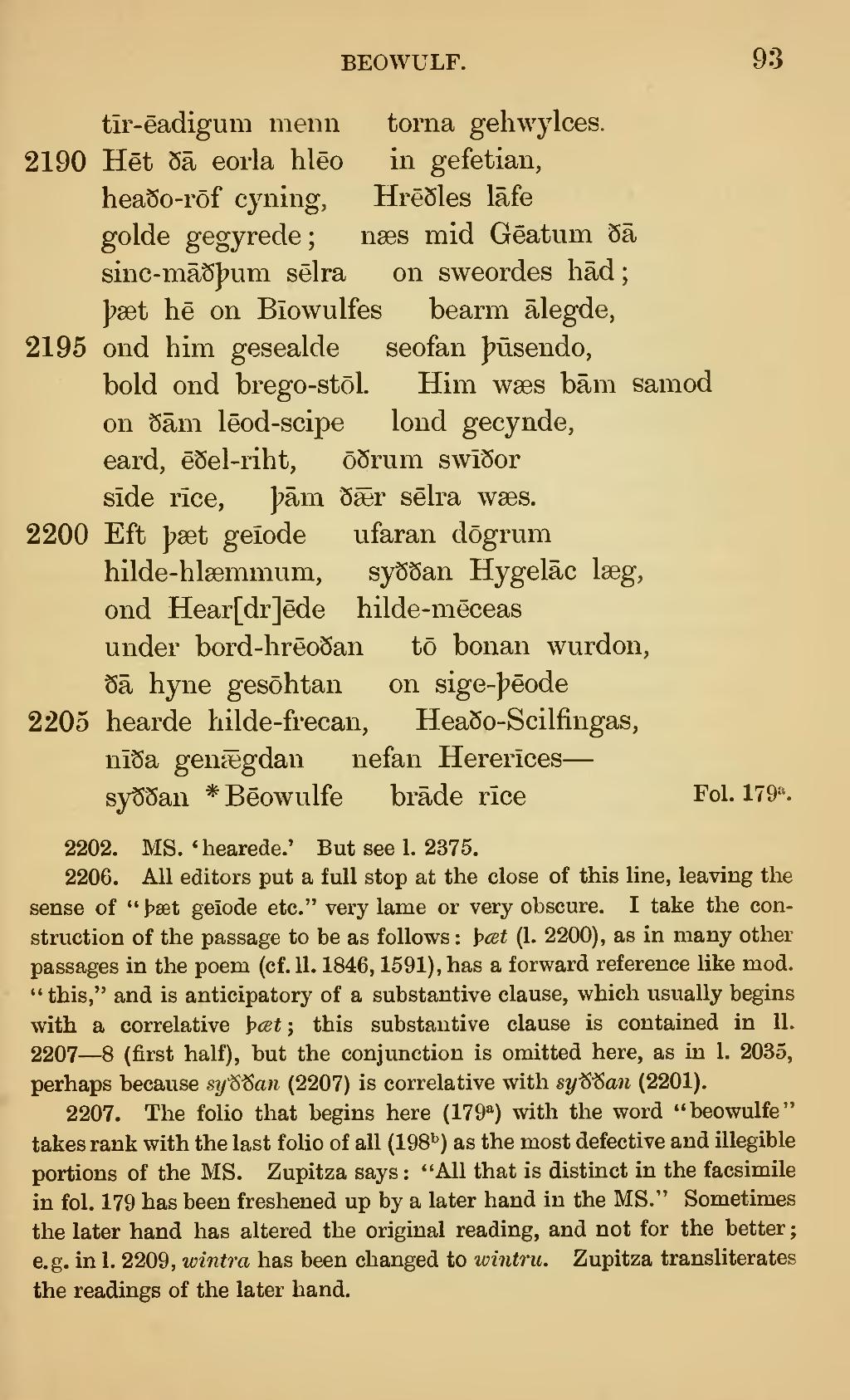BEOWULF.
93
tīr-ēadigum menn torna gehwylces.
2190Hēt ðā eorla hlēo in gefetian,
heaðo-rōf cyning, Hrēðles lāfe
golde gegyrede; næs mid Gēatum ðā
sinc-māðþum sēlra on sweordes hād;
þæt hē on Bīowulfes bearm ālegde,
2195ond him gesealde seofan þūsendo,
bold ond brego-stōl. Him wæs bām samod
on ðām lēod-scipe lond gecynde,
eard, ēðel-riht, ōðrum swīðor
sīde rīce, þām ðǣr sēlra wæs.
2200Eft þæt geīode ufaran dōgrum
hilde-hlæmmum, syððan Hygelāc læg,
ond Hear[dr]ēde[1] hilde-mēceas
under bord-hrēoðan tō bonan wurdon,
ðā hyne gesōhtan on sige-þēode
2205hearde hilde-frecan, Heaðo-Scilfingas,
nīða genǣgdan nefan Hererīces—[2]
syððan *Bēowulfe[3] brāde rīceFol. 179a.
- ↑ 2202. MS. ‘hearede.’ But see l. 2375.
- ↑ 2206. All editors put a full stop at the close of this line, leaving the sense of “þæt geīode etc.” very lame or very obscure. I take the construction of the passage to be as follows: þæt (l. 2200), as in many other passages in the poem (cf. ll. 1846, 1591), has a forward reference like mod. “this,” and is anticipatory of a substantive clause, which usually begins with a correlative þæt; this substantive clause is contained in ll. 2207—8 (first half), but the conjunction is omitted here, as in l. 2035, perhaps because syððan (2207) is correlative with syððan (2201).
- ↑ 2207. The folio that begins here (179a) with the word “beowulfe” takes rank with the last folio of all (198b) as the most defective and illegible portions of the MS. Zupitza says: “All that is distinct in the facsimile in fol. 179 has been freshened up by a later hand in the MS.” Sometimes the later hand has altered the original reading, and not for the better; e.g. in l. 2209, wintra has been changed to wintru. Zupitza transliterates the readings of the later hand.
